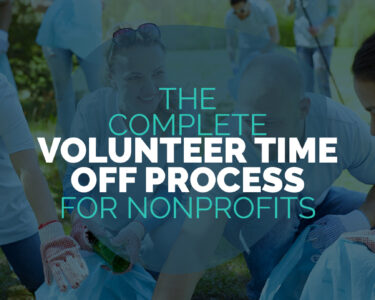
According to the 2024 Association Benchmarking Report by Naylor Association Solutions and Association Adviser, 65% of respondents indicated generating non-dues revenue as one of their top challenges as association leaders. Their top barriers to producing non-dues revenue include:
- Understaffed and not enough bandwidth (53%)
- Limited amount of resources (51%)
- Not enough member engagement (32%)
However, conquering these challenges is critical to your organization’s sustainability, especially considering that associations are relying less on membership dues for their revenue. This guide will walk you through steps to upgrade your revenue model so you can continue providing value to members and pursuing your mission for years to come.
1. Assess current revenue streams.
Start by looking at your current revenue model. Delve into your financial data to determine what percentage of your revenue comes from dues and other sources. That way, you can identify your starting point and evaluate progress as you work to diversify your revenue streams.
Of the revenue streams you already use, pinpoint which are the most profitable. For example, you may find that your annual conference generates the most revenue, whereas an online course you started offering several years ago generates the least. This exercise can help you determine which strategies are already working, which you may need to invest more heavily in, and which you may need to stop altogether.
2. Solicit member feedback.
In the MCI Association Engagement Index 2024, only 20% of association member respondents agreed with the following statement:
“It is easy to find content, information, programs and services that match my personal interests.”
Before launching a new initiative (or scrapping an old one), check in with your members to see what they’d be willing to invest in. Taking the time to source members’ opinions can ensure members actually engage with opportunities that boost non-dues revenue, resolving one of the largest barriers to association revenue diversification.
To collect member feedback, you may:
- Send a survey. Surveys are a quick and easy way to gather member feedback about their experiences. Ask members how they currently like to engage with your association and if there are any additional opportunities they’d like your organization to offer.
- Host a focus group. For more in-depth feedback, consider hosting a focus group. You may ask members how they currently like to engage with your association and why, gaining greater insight into their motivations. For instance, you may assume that members don’t sign up for your low-profit online course out of disinterest, but find it’s really because the landing page is broken. Additionally, workshop new revenue streams with focus group participants before you offer them to your entire member base.
After collecting this feedback, analyze the findings with your team. You may decide to have your web developer fix the online course page or move forward with planning a new networking event that members seemed particularly interested in.
3. Diversify non-dues revenue.
While dues are likely one of your main revenue streams, your membership numbers can change at any second, especially with a potential recession looming. You need to expand your strategy to include several types of non-dues revenue sources.
As Strategic Association Solutions’ accounting for nonprofits guide explains, “Diversifying your revenue helps keep your nonprofit financially stable and sustainable. If one revenue stream dries up, you’ll have others to rely on.”
Incorporate various revenue streams into your strategy, including:
- Educational resources. Offer industry-relevant webinars, online courses, and certifications that members and non-members alike can participate in.
- Events. Host conferences and networking events that bring industry professionals together.
- Sponsorships. Partner with businesses that can lend monetary support to events, webinars, newsletters, podcasts, research, co-branded campaigns, or awareness initiatives.
- Professional development services. Provide resume reviews, career coaching, and access to relevant templates and tools.
- Publications. Develop paid research reports, industry outlooks, or manuals.
- Merchandise. Sell branded merchandise like t-shirts, hats, and mugs.
Once you’ve determined which ideas your members are most receptive to, reach out again to further customize your offerings to their interests and needs. For example, you may survey members about the topics they’d like you to cover in an upcoming webinar or what times of day are most convenient for them to participate in career coaching.
4. Develop membership tiers.
Some members may be willing to pay more for their memberships than others. Make membership flexible and offer higher-value, more profitable opportunities to those who are interested via membership tiers.
As each tier increases in price, the benefits should increase as well. For example, your membership tiers might look something like this:
- Free Tier: The free tier may include access to your newsletters and public webinars.
- Basic Tier: The basic tier may include everything in the free tier, plus limited access to your membership directory. As Tradewing explains, making your directory a gated benefit “creates a small barrier to entry before individuals can network with other members seamlessly, ensuring that everyone who reaches out to your community through your association is a paid and trustworthy member.”
- Upgraded Tier: The upgraded tier may include everything in the free tier, plus full access to your membership directory, event discounts, and an exclusive resource library.
- Premium Tier: The premium tier may include everything in the upgraded tier, plus priority event registration, premium-only networking events, and personalized leadership development coaching.
Alternatively, you may base membership tiers on member type, with tiers for individuals, students, retirees, organizations, and corporate partners. In fact, the 2024 Membership Marketing Benchmarking Report from Marketing General Incorporated reveals that associations with renewal rates at or above 80% are significantly more likely to base their dues structures on specific attributes.
5. Invest in strong infrastructure.
With reliable systems in place to support these programs, your association can grow confidently and sustainably. Bolster your ability to provide high-value offerings that increase revenue by investing in areas like:
- Software solutions. The right software can streamline your operations and help you execute programs more effectively. Consider adopting association management software to manage and communicate with members, a learning management system to organize educational offerings, a community management platform to foster connections among members, and event management software to power conferences.
- Back-office services. Considering so many association professionals cite a lack of bandwidth as a barrier to generating non-dues revenue, consider outsourcing administrative duties like payroll, human resources (HR), and technology support. That way, you’ll have more time to focus on delivering membership benefits to your member base.
Strong infrastructure will set your organization up for success, transform the way your association operates, and maximize the resources you can dedicate to increasing non-dues revenue.
After you’ve revamped your sustainable revenue model, evaluate its performance. Track different revenue streams and continue soliciting member feedback to improve your approach. The more you refine your revenue model, the more successful it will be in sustaining your organization for the long haul.
👇Follow more 👇
👉 bdphone.com
👉 ultractivation.com
👉 trainingreferral.com
👉 shaplafood.com
👉 bangladeshi.help
👉 www.forexdhaka.com
👉 uncommunication.com
👉 ultra-sim.com
👉 forexdhaka.com
👉 ultrafxfund.com
👉 bdphoneonline.com
👉 dailyadvice.us




